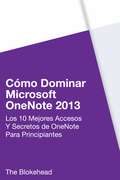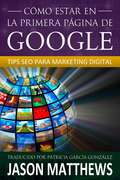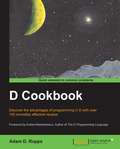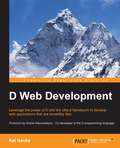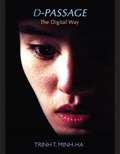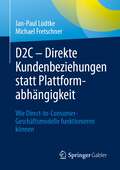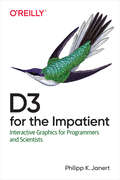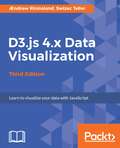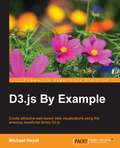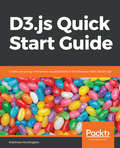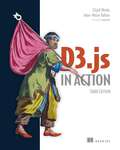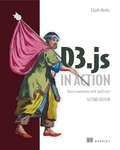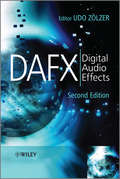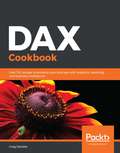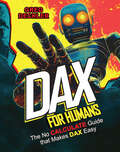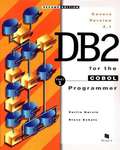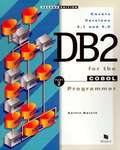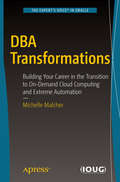- Table View
- List View
Cómo cortar con tu móvil
by Catherine PriceHemos pasado buenos ratos a su lado, nos ha acompañado a cenas y bodas... Pero ha llegado el momento de decir «querido móvil: ¡tenemos que hablar!» ¿Tu teléfono es lo primero que buscas por las mañanas y lo último que ves antes de ir a dormir? ¿Miras tu móvil con frecuencia solo para verificar y cuarenta y cinco minutos más tarde te preguntas cómo ha pasado todo este tiempo? ¿Dices que quieres desengancharte de tu teléfono, pero no tienes ni idea de por dónde empezar? El móvil puede ser un arma de doble filo y, si no aprendemos a usarlo, podemos llegar a depender seriamente de él. Sin apenas darnos cuenta, estos dispositivos están cambiando nuestro modus operandi e, incluso, nuestro cerebro: los hábitos, la capacidad de concentración, los patrones de sueño, nuestra memoria y, sobre todo, nuestras relaciones sociales se ven afectadas por el uso continuo del Smartphone. Para poner solución a esta realidad, Catherine Price nos propone: -Estrategias y trucos para desengancharnos del móvil. -Un plan de 30 días para dejar de pasar horas y horas frente a él. -Cómo configurar nuestro teléfono para aprovechar al máximo su potencial. En este libro descubrirás cómo las aplicaciones están diseñadas para ser adictivas, y aprenderás cómo nos afecta el tiempo que pasamos enganchados. Todos tenemos esta relación amor-odio con el móvil, pero ha llegado el momento de tomar de nuevo el control nuestro tiempo y de nuestra vida.
Cómo dirigir un negocio en Internet
by Sephora Black Sylwia EnglertCómo dirigir un negocio en Internet Las 26 mejores claves y trucos que le ayudarán a dirigir y comercializar un exitoso negocio en Internet ¡Un libro que necesita tener! El mejor momento para empezar un negocio online es hoy. Pero existe una gran diferencia entre hacerlo y hacerlo bien. Gracias a este manual aprenderá cómo: presentar su producto hacer publicidad en Internet construir su marca conectar con sus clientes Y mucho, mucho más. Género: economía y empresa Idioma: español Páginas: 37
Cómo dominar Microsoft OneNote 2013: Los 10 mejores accesos y secretos de OneNote para principiantes
by The BlokeheadEste libro nos enseña a cómo mejorar nuestra vida diaria con una aplicación que nos provee Windows Microsoft. OneNote nos ayuda a no perder el tiempo al tener una agenda manual, que tienes que cargar a todos lados y que se puede perder con facilidad, te evita hacer o repetir las mismas notas y a tener una limpia y organizada agenda.
Cómo estar en la primera página de Google: Tips SEO para Marketing Digital
by Jason Matthews Patricia García González¿Por qué Google? ¿Por qué centrarnos en él y no simplemente en los motores de búsqueda en general? Ésta es una óptima pregunta ya que existen Bing, Baidu, Ask, Entireweb y muchos más que no se deberían ignorar. Si investigas la participación de mercado global, descubrirás distintas estadísticas dependiendo de la región, mes y validez de la fuente de información pero una cosa se mantiene: Google es el indiscutible campeón de los motores de búsqueda mundiales, procesando más de un billón de peticiones de búsqueda diariamente. Y parece que lo seguirá siendo durante un tiempo. En un nivel global, aproximadamente entre el 70% y el 80% de todas las búsquedas se realizan con Google (dependiendo en quién crees) mientras los demás juntos suman el restante 20% o 30% (Septiembre de 2014). Las estadísticas también varían dramáticamente dependiendo de la región. En algunos estados europeos Google abarca más del 90% del mercado, un número alarmante que podría contribuir a la creación de leyes por competencia desleal y prevenir el dominio total de una industria. Además, sigue dominando la participación en el mercado de la telefonía móvil.
Cómo finalizar la membresía de la cuenta de Amazon Prime: o cancelar la guía de suscripción de prueba gratuita
by Dan GainesCómo finalizar la membresía de la cuenta de Amazon Prime o cancelar la guía de suscripción de prueba gratuita por Dan Gaines Esta guía te enseñará cómo cancelar tu membresía o prueba de Amazon Prime en menos de un minuto! Cómo finalizar la membresía de la cuenta de Amazon Prime o cancelar la guía de suscripción de prueba gratuita Esta guía te enseñará cómo cancelar tu membresía o prueba de Amazon Prime en menos de un minuto! -Pasos detallados y fáciles de seguir -Ahorra tiempo en averiguarlo por ti mismo -Ahorra tiempo sin necesidad de pasar horas contactando con el soporte de Amazon. -Cancelar en poco tiempo sin problemas Haga clic en el botón "Comprar ahora" para ¡acceder al instante!
Cómo hacer dinero con realidad virtual
by Adidas Wilson Marcello OdoardiLa gente ha estado esperando que la realidad virtual despegue durante años y se han sentido decepcionados, hasta hace poco. Muchos cambios ahora prometen un futuro brillante para la realidad virtual, sin embargo los inversores deben estar bien informados sobre varias aspectos del tema antes de sumergirse; ¿como cuáles son los riesgos?, ¿cuán grande será el mercado?, ¿por qué esta estrategia debería jugarse a largo plazo? y ¿quiénes son los principales actores?.
Cómo hacer tu propia página web gratis: y tu blog gratis
by Jason Matthews Miguel Segura¿Quieres tener tu propia página web o aprender a cómo hacer un blog? ¿Qué te parece un creador de webs gratuito sin ningún coste mensual? Tú lo puedes hacer, es fácil para cualquiera crear una página web y empezar a publicar en tu blog con proveedores como Wordpress y Blogger, incluso si no sabes nada de diseño web. No hace falta aprender HTML porque es muy fácil con la edición WYSIWYG (what you see is what you get) (lo que ves es lo que obtienes). Este libro está escrito para que cualquiera pueda entenderlo, desde el principiante hasta los usuarios avanzados, que se beneficiarán de consejos extra. Con esta guía aprenderás a: * crear páginas web gratis * crear blogs gratis * personalizar tus widgets * vender con botones de PayPal * dirigir tráfico con Facebook, Twitter, YouTube, Google Plus * maximizar SEO (optimización de motores de búsqueda) * subir en los rankings de Google-Bing * enviar artículos y comunicados de prensa * hacer crecer una lista de contactos de correo electrónico * y mucho más Además, es divertido y se saca lo máximo de herramientas totalmente gratuitas con la garantía de ahorrarte tiempo, dinero y esfuerzo. Hoy es el día para dar el gran salto para tener tu presencia en Internet y crear tu propia página web. Los temas incuyen: Wordpress, Blogger, diseño web, página web gratis, creador de páginas web gratis, crear una página web, blogging, crear una página web, cómo publicar un blog, SEO, Google, Yola, Webs
Cómo liberar a Roku
by Jonathan GatesDescripción del libro Es una guía paso a paso del cómo ejecutar Kodi en todos los aparatos Roku Si no es una de las mejores características de los aparatos Roku es que puedes ejecutar Kodi en ellos. Esto te permitirá tener acceso a cualuier contenido que quieras tales como shows de TV, Música, y Películas .
Cómo triunfar en el mundo digital
by Lina CáceresLos secretos y consejos de la mánager de Calle y Poché, Pautips, Sebastián Villalobos y muchos más. Muchos se preguntan quiénes están detrás del éxito de los creadores de contenido más populares de los últimos tiempos, como Calle & Poché, Sebastián Villalobos, Juan Pablo Jaramillo, Mario Ruiz y Xime Ponch. Uno de ellos es Lina Cáceres, cofundadora del departamento digital de la agencia de representación de talentos más importante de la región, LatinWE, quien ha convertido a sus creadores digitales en celebridades multiplataforma. ¿Cuál es el secreto? ¿Cuáles son las estrategias para ampliar sus audiencias, generar contenidos de calidad y ser la imagen de grandes marcas? ¿Cuáles son las bases para entender el entorno digital hoy y durante los próximos años? Este libro responde todos los interrogantes necesarios para entender y conocer las últimas tendencias y el futuro de un sector líder en el mundo de los negocios del entretenimiento.
D Cookbook
by Adam D. RuppeIn Detail D is a modern programming language that uses the familiar C family syntax while offering advanced modeling capabilities, safety guarantees, programmer productivity, and high efficiency. It helps you to get the most out of your hardware and your programmers simultaneously, saving both development and deployment costs. This practical guide will walk you through getting the work done with D, from writing your first program to writing advanced autogenerated objects, with notes based on real-world experiences telling you about potential pitfalls and how to avoid them. You'll use some of the third-party libraries available for D to get code working fast, including access to database engines, image processing, and more. Approach A recipe-packed reference guide filled with practical tasks that are concisely explained to develop and broaden the user's abilities with the D programming language. Who this book is for If you are an experienced programmer who is looking to explore a language that offers plenty of advantages over more established programming languages, this is the book for you. We assume that you are already familiar with general programming language basics, but you do not need to be a proficient user of D.
D Web Development
by Kai NackeLeverage the power of D and the vibe.d framework to develop web applications that are incredibly fast About This Book * Utilize the elegant vibe.d framework to build web applications easily and REST backends with the D programming language * Learn about all components of vibe.d to enhance your web development with D * A hands-on guide to the vibe.d framework; from static web pages to template-based, interactive and localized web applications with database access and REST backends Who This Book Is For Whether you are new to the world of D, or already have developed applications in D, or if you want to leverage the power of D for web development, then this book is ideal for you. Basic knowledge of core web technologies like HTML 5 is helpful but not required. This book explains the difficult details to speed your web development. What You Will Learn * Create amazingly fast web applications with D * Use Diet templates to easily create a web user interface * Utilize the web framework for interactive applications with input validation and internationalization * Access a database to provide persistent storage for your application * Extend your application with a REST interface and access other applications via REST * Understand vibe.d's fiber-based approach to asynchronous I/O and use it for integration of existing components * Create GUI applications with vibe.d In Detail D is a programming language with C-like syntax and static typing. The vibe.d framework builds on powerful D concepts like template meta-programming and compile-time function execution to provide an easy-to-use environment for web applications. The combination of a feature-rich web programming framework with a language compiling to native code solves two common issues in web development today: it accelerates your development and it results in fast, native web applications. Learning the vibe.d framework before you start your application will help you to choose the right features to reach your goal. This book guides you through all aspects of web development with D and the vibe.d framework. Covering the popular operating systems today, this guide starts with the setup of your development system. From the first Hello World-style application you will move on to building static web pages with templates. The concise treatment of web forms will give you all the details about form handling and web security. Using the abstractions of the web framework you will learn how to easily validate user input. Next, you will add database access to your application, providing persistent storage for your data. Building on this foundation, you will expose your component and integrate other components via REST. Learning about the internals of vibe.d you will be able to use low-level techniques such as raw TCP access. The vibe.d concepts can also be used for GUI clients, which is the next topic that you will learn. vibe.d is supported by an active community, which adds new functionality. This comprehensive guide concludes with an overview of the most useful vibe.d extensions and where to find them. It also shows you how to integrate these extensions in your application. The concepts are always illustrated with source code, giving you an insight into how to apply them in your application. Style and approach A tutorial-style guide to develop web applications with D and the vibe.d framework. Each topic is explained in detail and illustrated with source code, providing you with hands-on assistance for your application.
D-Passage: The Digital Way
by Minh-ha T. TrinhD-Passage is a unique book by the world-renowned filmmaker, artist, and critical theorist Trinh T. Minh-ha. Taking as grounding forces her feature film Night Passage and installation L'Autre marche (The Other Walk), both co-created with Jean-Paul Bourdier, she discusses the impact of new technology on cinema culture and explores its effects on creative practice. Less a medium than a "way," the digital is here featured in its mobile, transformative passages. Trinh's reflections shed light on several of her major themes: temporality; transitions; transcultural encounters; ways of seeing and knowing; and the implications of the media used, the artistic practices engaged in, and the representations created. In D-Passage, form and structure, rhythm and movement, and language and imagery are inseparable. The book integrates essays, artistic statements, in-depth conversations, the script of Night Passage, movie stills, photos, and sketches.
D2C – Direkte Kundenbeziehungen statt Plattformabhängigkeit: Wie Direct-to-Consumer-Geschäftsmodelle funktionieren können
by Michael Fretschner Jan-Paul LüdtkeDieses Buch zeigt kompakt auf, warum es für Unternehmen jeder Größe unumgänglich geworden ist, direkte Beziehungen zu ihren Kunden aufzubauen – nicht zuletzt, weil Plattformen wie Amazon, Google und Meta den Zugang zu Konsumenten oligopolisiert haben. Mit der richtigen Direct-to-Consumer-Strategie (D2C) und einer strukturierten Herangehensweise kann jedes Unternehmen im direkten Kundengeschäft erfolgreich sein, und so wertvolle und nachhaltige Beziehungen zu seiner Zielgruppe aufbauen. Die Autoren führen in die Hintergründe, Strategien und Prozesse ein und beschreiben, wie Unternehmen D2C-Geschäftsmodelle zielführend aufbauen können. Sie erläutern das wichtige Zusammenspiel von Kundenbeziehungen und -daten und geben konkrete Handlungsempfehlungen, welche Hausaufgaben Unternehmen erledigen müssen, um langfristig unabhängig von großen Plattformen zu werden.
D3 for the Impatient: Interactive Graphics for Programmers and Scientists
by Philipp K. JanertIf you’re in a hurry to learn D3.js, the leading JavaScript library for web-based graphics and visualization, this book is for you. Written for technically savvy readers with a background in programming or data science, the book moves quickly, emphasizing unifying concepts and patterns. Anticipating common difficulties, author Philipp K. Janert teaches you how to apply D3 to your own problems.Assuming only a general programming background, but no previous experience with contemporary web development, this book explains supporting technologies such as SVG, HTML5, CSS, and the DOM as needed, making it a convenient one-stop resource for a technical audience.Understand D3 selections, the library’s fundamental organizing principleLearn how to create data-driven documents with data bindingCreate animated graphs and interactive user interfacesDraw figures with curves, shapes, and colorsUse the built-in facilities for heatmaps, tree graphs, and networksSimplify your work by writing your own reusable components
D3.js 4.x Data Visualization - Third Edition
by Swizec Teller �ndrew RininslandCreate and publish your own interactive and compelling data visualizations with D3.js 4.x About This Book • Build interactive and rich graphics and visualization using JavaScript`s powerful library D3.js • Learn D3 from the ground up, using the all-new version 4 of the library • Gain insight into producing high-quality, extensible charts and visualizations using best practices such as writing testable, extensible code and strong typing Who This Book Is For This book is for web developers, interactive news developers, data scientists, and anyone interested in representing data through interactive visualizations on the Web with D3. Some basic knowledge of JavaScript is expected, but no prior experience with data visualization or D3 is required to follow this book. What You Will Learn • Map data to visual elements using D3's scales • Draw SVG elements using D3's shape generators • Transform data using D3's collection methods • Use D3's various layout patterns to quickly generate various common types of chart • Write modern JavaScript using ES2017 and Babel • Explore the basics of unit testing D3 visualizations using Mocha and Chai • Write and deploy a simple Node.js web service to render charts via HTML Canvas • Understand what makes a good data visualization and how to use the tools at your disposal to create accurate charts In Detail Want to get started with impressive interactive visualizations and implement them in your daily tasks? This book offers the perfect solution-D3.js. It has emerged as the most popular tool for data visualization. This book will teach you how to implement the features of the latest version of D3 while writing JavaScript using the newest tools and technique You will start by setting up the D3 environment and making your first basic bar chart. You will then build stunning SVG and Canvas-based data visualizations while writing testable, extensible code,as accurate and informative as it is visually stimulating. Step-by-step examples walk you through creating, integrating, and debugging different types of visualization and will have you building basic visualizations (such as bar, line, and scatter graphs) in no time. By the end of this book, you will have mastered the techniques necessary to successfully visualize data and will be ready to use D3 to transform any data into an engaging and sophisticated visualization. Style and approach This book follows a tutorial-based approach in teaching the world's most powerful data visualization library, D3.
D3.js By Example
by Michael HeydtCreate attractive web-based data visualizations using the amazing JavaScript library D3.js About This Book * Learn to use the facilities provided by D3.js to create data-driven visualizations * Explore the concepts of D3.js through examples that enable you to quickly create visualizations including charts, network diagrams, and maps * Get practical examples of visualizations using real-world data sets that show you how to use D3.js to visualize and interact with information to glean its underlying meaning Who This Book Is For Whether you are new to data and data visualization, a seasoned data scientist, or a computer graphics specialist, this book will provide you with the skills you need to create web-based and interactive data visualizations. This book assumes some knowledge of coding and in particular, experience coding in JavaScript. What You Will Learn * Install and use D3.js to create HTML elements within the document * Use development tools such as JSBIN and Chrome Developer Tools to create D3.js applications * Retrieve JSON data and use D3.js selections and data binding to create visual elements from data * Create and style graphical elements such as circles, ellipses, rectangles, lines, paths, and text using SVG * Turn your data into bar and scatter charts, and add margins, axes, labels, and legends * Use D3.js generators to perform the magic of creating complex visualizations from data * Add interactivity to your visualizations, including tool-tips, sorting, hover-to-highlight, and grouping and dragging of visuals In Detail This book will take you through all the concepts of D3.js starting with the most basic ones and progressively building on them in each chapter to expand your knowledge of D3.js. Starting with obtaining D3.js and creating simple data bindings to non-graphical HTML elements, you will then master the creation of graphical elements from data. You'll discover how to combine those elements into simple visualizations such as bar, line, and scatter charts, as well as more elaborate visualizations such as network diagrams, Sankey diagrams, maps, and choreopleths. Using practical examples provided, you will quickly get to grips with the features of D3.js and use this learning to create your own spectacular data visualizations with D3.js. Style and approach This book uses a practical, step-by-step approach that builds iteratively, starting with the basic concepts right through to mastery of the technology. Each concept is demonstrated using code examples that are interactively available online (and can also be run locally), and each chapter builds upon the concepts covered in the previous chapter,with succinct explanations of what the code does and how it fits into the bigger picture.
D3.js Quick Start Guide: Create amazing, interactive visualizations in the browser with JavaScript
by Matthew HuntingtonThis book will help you build interactive graphs that are viewable in any web browser using JavaScript, D3.js, and SVG. You will learn how to make a scatter plot, a bar graph, a pie chart, a force directed graph, and a map.Key FeaturesTakes you through the most common graphs you'll needAdd interactivity to your visualizationsEasy to follow buildsBook DescriptionD3.js is a JavaScript library that allows you to create graphs and data visualizations in the browser with HTML, SVG, and CSS. This book will take you from the basics of D3.js, so that you can create your own interactive visualizations, to creating the most common graphs that you will encounter as a developer, scientist, statistician, or data scientist.The book begins with an overview of SVG, the basis for creating two-dimensional graphics in the browser. Once the reader has a firm understanding of SVG, we will tackle the basics of how to use D3.js to connect data to our SVG elements. We will start with a scatter plot that maps run data to circles on a graph, and expand our scatter plot to make it interactive. You will see how you can easily allow the users of your graph to create, edit, and delete run data by simply dragging and clicking the graph. Next, we will explore creating a bar graph, using external data from a mock API.After that, we will explore animations and motion with a bar graph, and use various physics-based forces to create a force-directed graph. Finally, we will look at how to use GeoJSON data to create a map.What you will learnBuild a scatter plotBuild a bar graphBuild a pie chartBuild a force-directed graphBuild a mapBuild interactivity into your graphsWho this book is forThis book is for web developers, interactive news developers, data scientists, and anyone interested in representing data through interactive visualizations on the Web with D3. Some basic knowledge of JavaScript is expected, but no prior experience with data visualization or D3 is required to follow this book.
D3.js in Action, Third Edition (In Action)
by Elijah MeeksCreate stunning web-based data visualizations with D3.js.This totally-revised new edition of D3.js in Action guides you from simple charts to powerful interactive graphics. Chapter-by-chapter you&’ll assemble an impressive portfolio of visualizations—including intricate networks, maps, and even a complete customized visualization layout. Plus, you'll learn best practices for building interactive graphics, animations, and integrating your work into frontend development frameworks like React and Svelte. In D3.js in Action, Third Edition you will learn how to: Set up a local development environment for D3 Include D3 in web development projects, including Node-based web apps Select and append DOM elements Size and position elements on screen Assemble components and layouts into creative data visualizations D3.js in Action, Third Edition has been extensively revised for D3.js version 7, and modern best practices for web visualizations. Its brand new chapters dive into interactive visualizations, cover responsiveness for dataviz, and show you how you can improve accessibility. Foreword by Andy Kirk. About the technology With D3.js, you can create sophisticated infographics, charts, and interactive data visualizations using standard frontend tools like JavaScript, HTML, and CSS. Granting D3 its VIS Test of Time award, the IEEE credited this powerful library for bringing data visualization to the mainstream. You&’ll be blown away by how beautiful your results can be! About the book D3.js in Action, Third Edition is a roadmap for creating brilliant and beautiful visualizations with D3.js. Like a gentle mentor, it guides you from basic charts all the way to advanced interactive visualizations like networks and maps. You&’ll learn to build graphics, create animations, and set up mobile-friendly responsiveness. Each chapter contains a complete data visualization project to put your new skills into action. What's inside Fully revised for D3.js v7 Includes 12 complete projects Create data visualizations with SVG and canvas Combine D3 with React, Svelte, and Angular About the reader For web developers with HTML, CSS, and JavaScript skills. About the author Elijah Meeks was a data visualization pioneer at Stanford and the first Senior Data Visualization Engineer at Netflix. Anne-Marie Dufour is a Data Visualization Engineer. The technical editor on this book was Jon Borgman. Table of Contents PART 1 1 An introduction to D3.js 2 Manipulating the DOM 3 Working with data 4 Drawing lines, curves, and arcs 5 Pie and stack layouts 6 Visualizing distributions PART 2 7 Interactive visualizations 8 Integrating D3 in a frontend framework 9 Responsive visualizations 10 Accessible visualizations PART 3 11 Hierarchical visualizations 12 Network visualizations 13 Geospatial information visualizations PART 4 14 Creating a custom visualization 15 Rendering visualizations with Canvas Appendix A Appendix B Appendix C Appendix D Appendix E
D3.js in Action: Data visualization with JavaScript
by Elijah MeeksSummaryD3.js in Action, Second Edition is completely revised and updated for D3 v4 and ES6. It's a practical tutorial for creating interactive graphics and data-driven applications using D3. Purchase of the print book includes a free eBook in PDF, Kindle, and ePub formats from Manning Publications.About the TechnologyVisualizing complex data is hard. Visualizing complex data on the web is darn near impossible without D3.js. D3 is a JavaScript library that provides a simple but powerful data visualization API over HTML, CSS, and SVG. Start with a structure, dataset, or algorithm; mix in D3; and you can programmatically generate static, animated, or interactive images that scale to any screen or browser. It's easy, and after a little practice, you'll be blown away by how beautiful your results can be!About the BookD3.js in Action, Second Edition is a completely updated revision of Manning's bestselling guide to data visualization with D3. You'll explore dozens of real-world examples, including force and network diagrams, workflow illustrations, geospatial constructions, and more. Along the way, you'll pick up best practices for building interactive graphics, animations, and live data representations. You'll also step through a fully interactive application created with D3 and React. What's InsideUpdated for D3 v4 and ES6Reusable layouts and componentsGeospatial data visualizationsMixed-mode renderingAbout the ReaderSuitable for web developers with HTML, CSS, and JavaScript skills. No specialized data science skills required.About the AuthorElijah Meeks is a senior data visualization engineer at Netflix.Table of ContentsPART 1 - D3.JS FUNDAMENTALSAn introduction to D3.js Information visualization data flow Data-driven design and interaction Chart components Layouts PART 2 - COMPLEX DATA VISUALIZATIONHierarchical visualization Network visualization Geospatial information visualization PART 3 - ADVANCED TECHNIQUES Interactive applications with React and D3 Writing layouts and components Mixed mode rendering
DAFX: Digital Audio Effects
by Udo ZölzerThe rapid development in various fields of Digital Audio Effects, or DAFX, has led to new algorithms and this second edition of the popular book, DAFX: Digital Audio Effects has been updated throughout to reflect progress in the field. It maintains a unique approach to DAFX with a lecture-style introduction into the basics of effect processing. Each effect description begins with the presentation of the physical and acoustical phenomena, an explanation of the signal processing techniques to achieve the effect, followed by a discussion of musical applications and the control of effect parameters. Topics covered include: filters and delays, modulators and demodulators, nonlinear processing, spatial effects, time-segment processing, time-frequency processing, source-filter processing, spectral processing, time and frequency warping musical signals. Updates to the second edition include: Three completely new chapters devoted to the major research areas of: Virtual Analog Effects, Automatic Mixing and Sound Source Separation, authored by leading researchers in the field . Improved presentation of the basic concepts and explanation of the related technology. Extended coverage of the MATLABTM scripts which demonstrate the implementation of the basic concepts into software programs. Companion website (www.dafx.de) which serves as the download source for MATLABTM scripts, will be updated to reflect the new material in the book. Discussing DAFX from both an introductory and advanced level, the book systematically introduces the reader to digital signal processing concepts, how they can be applied to sound and their use in musical effects. This makes the book suitable for a range of professionals including those working in audio engineering, as well as researchers and engineers involved in the area of digital signal processing along with students on multimedia related courses.
DAX Cookbook: Over 120 recipes to enhance your business with analytics, reporting, and business intelligence
by Greg DecklerBusiness users, BI developers, data analysts, and SQL users who are looking for solutions to the challenges faced while solving analytical operations using DAX techniques and patterns will find this book useful. Basic knowledge of the DAX language and Microsoft services is mandatory.
DAX for Humans: The No CALCULATE Guide that Makes DAX Easy
by Greg DecklerLevel up your Power BI skills by learning DAX in an easy, fun, and practical way using one core pattern that can be used to solve most problemsKey FeaturesLearn simple through advanced DAX in a clear, concise way using real-world examplesExplore powerful techniques for debugging DAX and increasing efficiencyUse artificial intelligence to write, refine, and troubleshoot your DAX formulasPurchase of the print or Kindle book includes a free PDF eBookBook DescriptionAlthough DAX has been around for over a decade, many struggle to master the language primarily because DAX is often taught through the CALCULATE function, which is the most complex and unintuitive function in all of DAX. But what if DAX could be taught without CALCULATE? The result would be an incredibly intuitive and easy way to learn DAX. DAX for Humans stands the traditional approach to learning DAX on its head, foregoing the traditional, legacy methods of learning DAX for a more modern approach that focuses on core DAX concepts and not any specific function. Even if you know nothing about DAX, from the very first chapter you will learn the essentials of the DAX language, as well as a single pattern to solve the majority of DAX problems. From that point forward, you’ll explore how to work with the basic building blocks of the DAX language and apply what you learn to real-world business scenarios across customers, human resources, projects, finance, operations, and more. By the end of this book, you’ll be able to apply your DAX skills to simple, complex, and advanced scenarios; understand how to optimize and debug your DAX code; and even know how to efficiently apply artificial intelligence to help you write and debug your DAX code.What you will learnMaster techniques to solve common DAX calculationsApply DAX to real-word, practical business scenariosExplore advanced techniques for tackling unusual DAX scenariosDiscover new ideas, tricks, and time-saving techniques for better calculationsFind out how to optimize and debug DAX effectivelyLeverage AI to assist in writing, troubleshooting, and improving DAXWho this book is forIf you use Power BI but struggle with DAX or if you know DAX but want to improve and expand your skills, then this book is for you. Even if you have never used Power BI or DAX before, you will find this book helpful as you progress from the basics to mastery of the DAX language using real-world scenarios as your guide.
DB2 for the COBOL Programmer PART 1
by Curtis Garvin Steve EckolsCovers advanced locking concepts, COBOL programs that use dynamic SQL, CICS programs that process DB2 data, and database administration. The second edition updates the new language and features available with versions 4.1 and 5.0, and adds two new chapters on OS/390 and its data sharing features, and on stored procedures. Annotation c. Book News, Inc., Portland, OR (booknews.com)
DB2 for the COBOL Programmer, Part 2 (2nd Edition)
by Curtis Garvin Anne PrinceCovers advanced locking concepts, COBOL programs that use dynamic SQL, CICS programs that process DB2 data, and database administration. The second edition updates the new language and features available with versions 4.1 and 5.0, and adds two new chapters on OS/390 and its data sharing features, and on stored procedures. Annotation c. Book News, Inc., Portland, OR (booknews.com)
DBA Transformations: Building Your Career in the Transition to On-Demand Cloud Computing and Extreme Automation
by Michelle MalcherAdapt your career as a database administrator to the changing industry. Learn where the growth and demand for DBA talent are occurring and how to enhance your skill set. Creating databases, providing access, and controlling data are no longer the focus. What matters now is managing and monitoring the systems that provide access to users of the data. This book will help you formulate a plan for development and change to remain valuable in the face of radical new developments around cloud computing, containerized databases, and automation of routine tasks. The playing field is shifting rapidly with the development of technologies and software enhancements that automate and even eliminate many traditional aspects of the DBA job. DBA Transformation helps you redirect your attention and skills as a DBA to areas such as design and development of the containers and cloud environments on which automation depends. You will be encouraged to build soft skills as well as to focus on technical pain points such as data security that are of even greater importance now that so much corporate data is in cloud-based systems that are accessible from the Internet at large. What You'll Learn Embrace and profit from rapid shifts in the database industry Recognize where growth and demand for talent are occurring Create a personal transformation plan to help you navigate the changes Pivot your career toward more interesting skills and responsibilities Who This Books Is For Working database professionals who are interested in keeping their careers relevant as well as building their careers and making them stronger in the face of dramatic changes that are being driven by trends toward cloud computing and containerization


